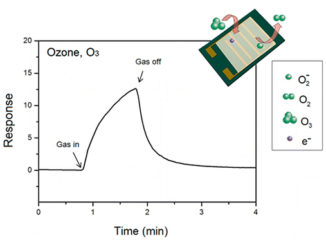
On the morphology of BaMoO4 crystals: A theoretical and experimental approach
Abstract: BaMoO4 crystals were obtained by a co-precipitation method, and their structures were characterized by X-ray diffraction and Rietveld refinement techniques. Field emission scanning electron microscopy was utilized to investigate the morphology of the as-synthesized aggregates.Through systematic first principle calculations within the density functional theory method at the B3LYP level, we investigated the structure; the surface stability of the (001), (101), (110), (100), (111), and (112) surfaces; and the morphological transformations of BaMoO4. The relative surfaces energies were further varied to predict a complete map of the available morphologies through a Wulff construction approach. This revealed that the obtained experimental and theoretical morphologies coincided when the surface energy values of the (001) surface decreased while those of the (100) and (101) facets increased simultaneously. Analysis of the surface structures showed that the electronic properties were associated with the presence of undercoordinated [BaOx] (x = 4, 5, and 6) and [MoOy] (y = 3) clusters. The presented results provide a comprehensive catalog of the morphologies most likely to be present under realistic conditions, and will serve as a starting point for future studies on the surface chemistry of BaMoO4 crystals.
Author(s): Oliveira, MC; Gracia, L; Nogueira, IC; Gurgel, MFC; Mercury, JMR; Longo, E; Andres, J.
CRYSTAL RESEARCH AND TECHNOLOGY
Volume: 51 Pages: 634-644 Published: OCT 2016
PDF On the morphology of BaMoO4 crystals A theoretical and experimental approach
DOI: 10.1002/crat.201600227




